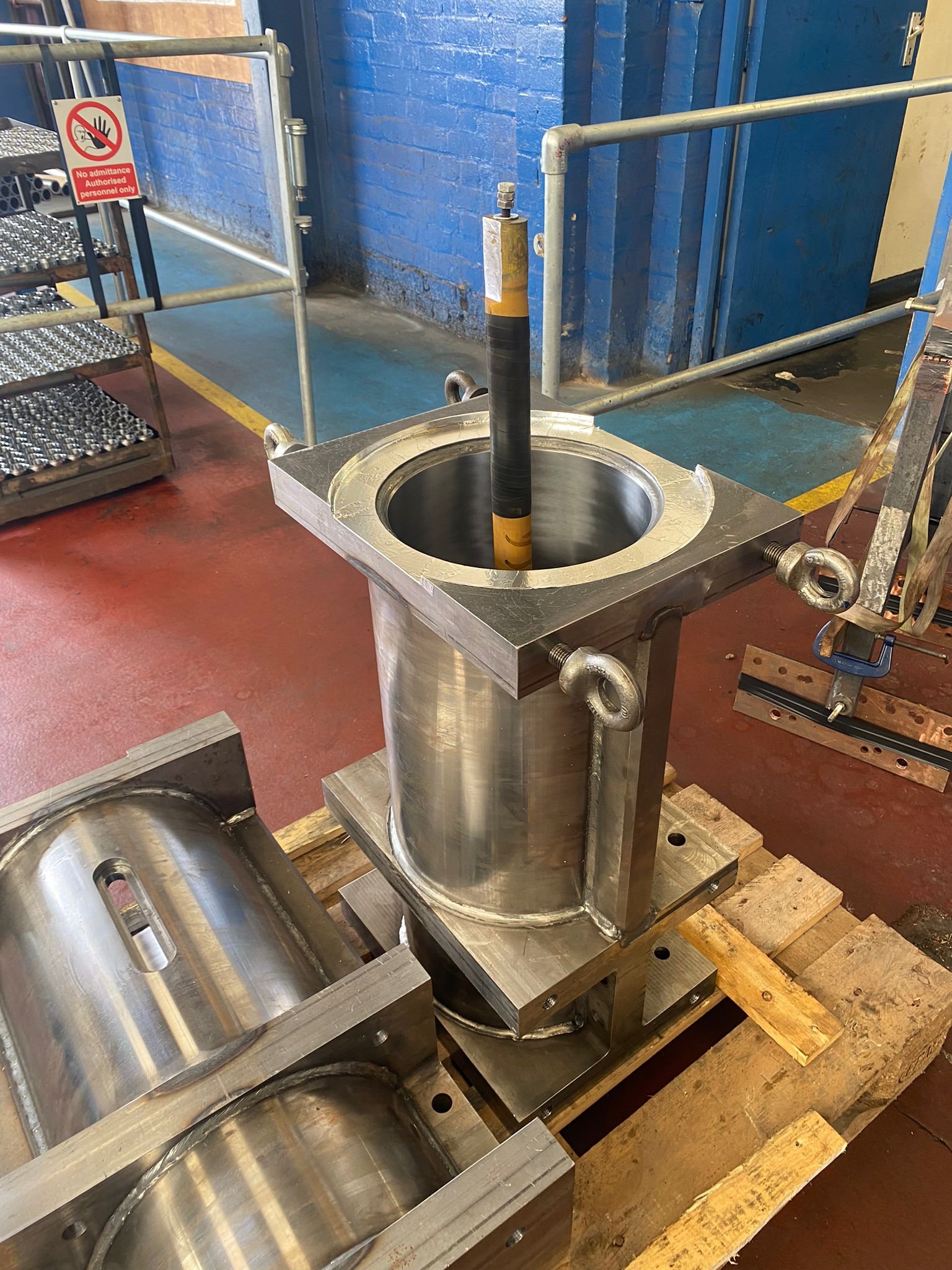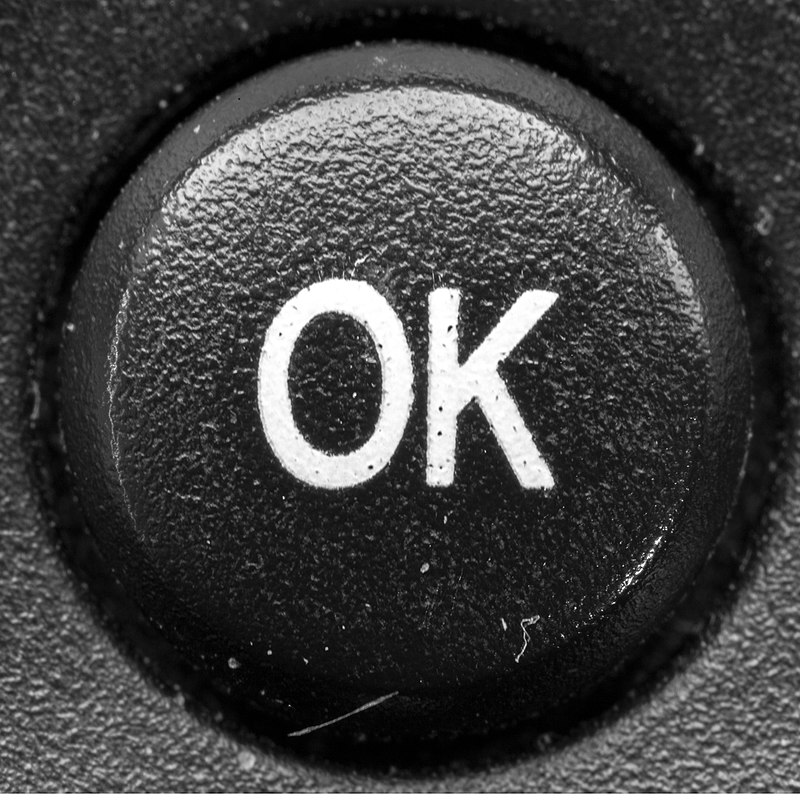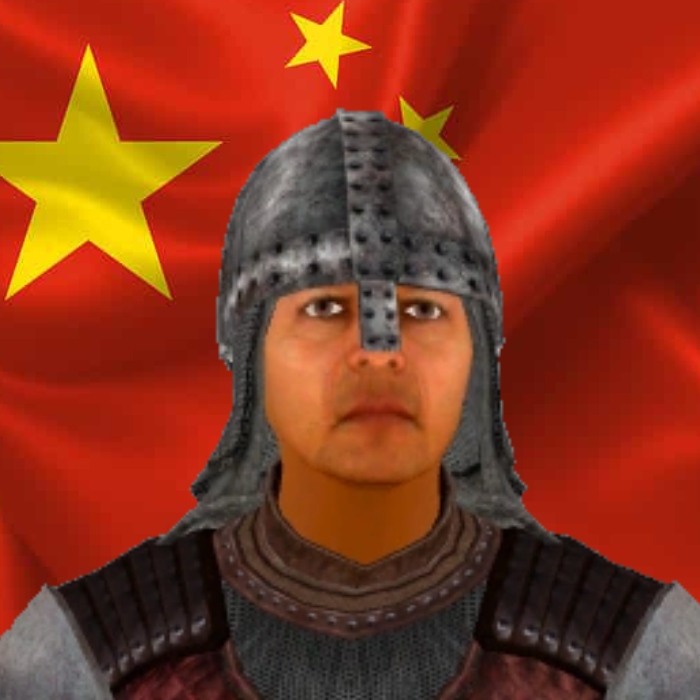This guy is fucking incredible. “Founder” in bio ass motherfucker. In another thread recently he suggested there is no need for what he refers to as “2d’s” (engineering prints) and that everyone should just work off of 3D models. This guy supposedly runs an engineering company and has never set foot on a shop floor, engineered anything, or presumably even turned a screwdriver in his life. Every engineer and machinist on Twitter is shitting on him and he’s doing that “they hated him because he told the truth” thing. Then you have the handful of dumbasses one-upping him, who think CAM software can be replaced with ChatGPT.
A case study in why Americans will never return to the Moon.
Imagine being able to have a computer that runs a 3D model constantly that doesn’t get shit all over it within the first couple of hours. The reason you have prints is so you can, you know, print it out!
Naa. That can be done. I use a computer on the shop floor. I do CAD/CAM on the shop floor. Yeah, the computer gets fouled up with oil and shit, but fuck it. If it dies, buy a new one. Operating expense. We also have tablets at each workbench. Nothing is stopping us from having an app for viewing 3D models on there. Some people in that thread were like “oh it wouldn’t make sense to buy a CAD seat for every machinist.” No, that’s not it either. Just pirate that shit. Even if it were free, it would be a stupid idea.
A print is nice, because it can be marked up. I can pull out a pencil and add notes. I can highlight dimensions on it. I can walk it over to an engineer and POINT at a feature (or even, when proper characteristic maps are made, just reference a feature number in a phone call or an email).
Prints have a design language to them which allows you to express fully constrained geometric designs on a napkin if you need to. Dimensions, radii, diameters, angles, datums, positions, projections, sections, GD&T. None of this is obvious in a 3D model. You don’t know what the driving dimensions are, what can be inferred from other dimensions, if it is a coincidence or a requirement that two features line up, etc.
There are rules to engineering prints. You never dimension a feature when it can be inferred from other dimensioned features. Dimensions are added until nothing is ambiguous, without constraining any feature more than once. It is formulaic. This is fundamental to how manufacturing processes are developed and how inspection plans are generated. It is the fundamental way of proving the geometry of a part has been fully considered. And then once you have it, you can send it to any shop in the WORLD and they will understand exactly what you want. They will be able to inspect parts and know exactly what to accept / reject.
I do a lot of one-off shit in the shop, making fixtures and custom inspection gages. A lot of times the programmers will skip making a blueprint for things like this and just send me a STEP file, which is FINE. I can select the geometry I need from the STEP file, turn it into a toolpath, and cut it, but it tells me NOTHING about what tolerances I’m aiming for, if it is better to go over/under size, which dimensions are the most important, or what datums I should be referencing when I fixture the part in the machine.
Prints have a design language to them which allows you to express fully constrained geometric designs on a napkin if you need to. Dimensions, radii, diameters, angles, datums, positions, projections, sections, GD&T. None of this is obvious in a 3D model. You don’t know what the driving dimensions are, what can be inferred from other dimensions, if it is a coincidence or a requirement that two features line up, etc.
This is so critical. In architecture and structural engineering, you can add to this that you don’t actually know a lot of the real dimensions - you’re laying out the important ones from the structural grid or from survey points, and whatever is left doesn’t matter.
Even markup, at least in a design environment, can be done in 3D (or at least on a computer), but the communication of constraints, that is, what dimensions are important and which are irrelevant or unknowable has not yet been developed in 3D models, and I suspect it will be some time before any useful language for that purpose stabilizes.
Even markup, at least in a design environment, can be done in 3D (or at least on a computer), but the communication of constraints, that is, what dimensions are important and which are irrelevant or unknowable has not yet been developed in 3D models, and I suspect it will be some time before any useful language for that purpose stabilizes.
This is a thing which exists in a lot of CAD packages, and it is reasonable for an engineering firm and a contractor to use the same CAD package as part of a contract. Some of the more fancy (expensive) stuff can even check for interference in assemblies throughout tolerance ranges. But still, if you cannot turn your design into an ASME / ISO drawing I have severe doubts in your competence.
Yeah, I know some of that exists; it never showed up in my world. We never modeled buildings with enough detail to make it really useful. Occasionally someone would get excited about Tekla and we’d spend some time trying to do shop drawing reviews in 3D and then go back to PDF. What I meant was that it isn’t yet a standard thing that is understood by any technician in the industry, it’s proprietary software that is subject to change with every release.
I’m fairly sure some things(like impeller or fan blade geometry) can’t be meaningfully communicated on a drawing and only through a model. I expect some of that to be more common as AM allows manufacture of internal features designed for/around fluid flow.
Can you come to my job and explain how tolerances work to these engineers?
I never thought about any of that before but it totally makes sense.
When learning skills that are depicted visually, I’ve found it’s better to get a book that’s old enough to have illustrations or diagrams if possible. 2d line drawings in black and white, or with judicious use of 1 or 2 other colors. A skilled illustrator can show exactly what you need to see but photographs necessarily have various other stuff in view. Illustrations can clearly depict motion, hidden parts, or changes over time in ways that photos can’t hope to.
And that’s without the benefit of assuming a lot of knowledge on the part of the reader the way you can do within a profession like you are describing.
You can say ‘it’s an operating expense’ but that isn’t the problem. The problem is that the shit breaks when you need it to work, especially if you are welding or sizing or just have machinists or welders being fucking idiots on the floor as they often are (because it is hard to not be a fucking idiot in a place that you spend 40-60 hours a week). Let alone fumes, grease, and dust. It’s an idea that sounds good but just doesn’t work imo. Paper just works better, and I’m not even a geezer.
You can have a computer on the shop floor (I recommend at least three within walking distance for layout design), but having a computer (or even screen) in every booth to run CAD through is dumb as hell. I knew this from working in a shop and I know it from experience when I was overruled by management because they got it into their heads from some networking guru that every booth needed a screen, half of which now no longer work after three months and aren’t going to be replaced. I still haven’t had the balls to say I told you so, but it’s annoying as shit to see stuff coming from a mile away. Maybe it works for the Germans and Finns, but our shops just aren’t nearly as clean as theirs are.
Sometimes it is nice to see the 3-D, but the print should tell you everything you need to know, and if it doesn’t then you have to talk to an engineer about it because someone fucked up. And if they aren’t making prints, it is totally up to the machinist’s discretion. Idk, I can’t even imagine not making a fully speced print for a design, it’s such an anathema to the kinds of products I work with. Even a small run has to have tolerances or the welders will literally have to feel out good parts from bad parts, which they do not appreciate.
You never dimension a feature when it can be inferred from other dimensioned features. Dimensions are added until nothing is ambiguous, without constraining any feature more than once.
Tbf engineering 3d models should also be this. They’re usually not, but
constraining a CAD model and communicating tolerances like datum, or runout vs cylindricity are very different things.
I recently fixed up a colleagues cad model and he left everything blue :( it sucked when one dimension needed changing.
The guys in the shop know way more about what they’re doing than I do. I feel like I’m doing nothing in solidworks, but shuttling back and forth between the workshop and computer. Apparently insurance liked to have drawings though
Dumb question, but can’t you go from a CAD file direct to gcode in fusion for CNCs?
A Solid Model (CAD) file (while very useful) doesn’t contain all the information you need to convey what a good part is. There are an innumerable amount of things you want to convey to the manufacturer what you are looking for, from masking parts of a surface, to how parts need to be packaged, to which of the dimensions are the most important and how you should measure them (GDT etc).
There are services out there that you just upload a solidpart file and they give you a price. They are highly automated, cheap and quick. The parts are not high quality. Often their standard tool sets cant machine a feature. They communicate that and you have to make other arrangements, either alter your design, or plan on doing some post processing. I was actually supposed to place an order with one today, but had some problems with capability so I am altering the design to accommodate those limitations.
Its sad, but good machinists are a dying breed.
They are out there, but they are usually stuck running basic processes that are essential to products but can’t be trusted with incoming hires to maintain quality. Ironically, incoming hires usually work on more bespoke projects because they aren’t as essential to the business being successful (unless the process has been highly automated, and then no one gets any real machining experience). Shops are weird like that.
I ask this because if I need something machined, I just send an onshape link to a friend with a shaepoko or run a fabworks order, neither of which need 2ds. I can’t do half depth through fabworks because it’s just lasered, although I’ve had significantly fewer issues with fabworks than with shaepoko guy.
Begging CEO techbros to understand what tolerances really mean, for the love of god.
CEO Techbros: "Whatever you just said, add it to the cloud.

These days it will be something like:
Add it to the AI cloud
Only the best from those that continually rediscover themselves with fashionable substances and push the boundaries of thinking outside the box:

They think it’s just a rating from 0-100 of how much you tolerate minorities. Doesn’t need any units, don’t worry about it.
0.01 what inches? Cause that isn’t that tight, but it might not need be with that large a piece but there’s no way the entire spec is +/- .01. Those diameters are probably +/-.005
Oh it’s 0.01 units of pulled directly out my ass, got it ok ship it out, we good 👍
Be rest assured, every part has a drunk uncle slapping it and saying, “Yep! That’ll hold.”
“When in doubt, ship it out”

“If it fits, it ships”
“We can inspect the parts when they send them back”
“Fuck it, It’s [that one consumer goods company which sends purchase orders to an ISO 13485 (medical device manufacturing) facility for some reason]”
All jokes aside, tight tolerances DO NOT indicate good engineering. Anybody can add a bunch of extra zeros to a fucking blueprint. A well engineered part / assembly will have things toleranced as loosely as permissible, with the exception of a handful of critical dimensions, and a good design will ensure that even those critical dimensions don’t need to keep the machinist running back and forth between the grinder and the laser micrometer.
Excessively tight tolerances will cause a lot of perfectly functional parts to be scrapped, require additional machining operations, more expensive tooling, more frequent tool changes, increased rework, increased machine operator skill, increased inspection frequency, etc. etc. etc. When some fuckstick like Elon Musk comes around and says they’re tightening the tolerances to make the fucking door panels line up correctly, they’re telling you they have no idea what they’re doing.
Holding tight tolerances is a matter of workmanship. Engineers are supposed to be the ones figuring out where that effort makes the most impact and where it makes no difference whatsoever.
God the over right tolerances have been the worst experience with parts I have ever inspected.
Piece of plastic with drilled holes into it with about a 12" OD true positioned to 0.0002" to the OD the center ID and the bottom of the part. We got everything consistent enough to 0.001" and called it good enough lol. Place was a literal clown show with so much wasted talent cause of a management shit show
What the fuck. Plastic will lose that .0002" tolerance if somebody farts in the same room (especially .0002 over 12 inches!). How do you even measure the location of a hole that size? If you’re trying to nail the position down to .0002 what the fuck is the cylindricity supposed to be? Atomically perfect?
I’m over here thinking about temperature changes. It will be precise within 0.0002” at the ambient temperature on whatever Wednesday at whatever time
Going by a thermal expansion calculator, if the part is steel, then a temp increase by only 20F will cause the length to increase by 0.0048”. Idk what the coefficient of expansion is for plastic, but it also has one and it’s probably going to result in variations larger than 0.0002”
Lower tolerances is what allowed the Soviets to whiz past the entire Axis combined in terms of tank production. The only difference was a Soviet KV-1 could put a shell through the front and out the back of a Panzer IV a kilometer away while the Panzer’s shells would bounce off at 200 meters.
I mean, for most parts of a vehicle, within 1/100 of an inch is plenty close enough. Most of the things that it wouldn’t be are more generic off the shelf stuff. Like, chevy doesn’t make all of their their transmissions, for instance. Tremec makes the ones for the corvette, and some of their 10 speed ones are made by a shared effort between Ford and Chevy/GM. Than Nissan ops to use these POS jnco transmissions, and there’s several others. Same for some engines or at least many of the parts in the engines.
But all the frame, mounts, body panels, holes, brackets, etc…1/100th inch would be fine.
jnco transmissions
Their pants were much higher quality
Lol. Woops. *Jatco
It’s actually 0.01pm, and yes, we will be hiring quantum physicists and building some very fancy lab equipment to check the individual atoms.
1% tolerance. Each dimension can be 1% smaller or larger. Easy peasy.
O_o
Lots of dimensionless-quantity erasure ITT.
HOW CAN YOU KNOW YOU’RE BUILDING IT WITHIN TOLERANCES WITHOUT A QA PROCESS THAT’S LITERALLY WHAT A QA PROCESS IS FOR

Your units are wrong! cried the teacher.
Your church weighs six joules — what a feature!
And the people inside
Are four hours wide,
And eight gauss away from the preacher!0.01 international tolerance units
Didn’t Elon say something demented about Bazingatruckerinos being built with 10 micrometer tolerance about a year ago? This dickhead is probably just regurgitating that.
Billionaire bazingas have a bit of a WAAAAGH field, sometimes called a “reality distortion field” but unfortunately for them it doesn’t tend to apply to inanimate objects that still have to heed the laws of physics.
Ya he pull that out of his ass one day and send a company wide email telling everyone that was the new standard, basically so he could win a Twitter argument. Which is insane becuase it would either make the trucks 100x more expensive or is just physically impossible becuase he didn’t specify what temperature he was talking about. Also, if anyone has seen a Cybertruck, it is immediately obvious that they don’t bother checking tolerances anyways.
Hmm, it’s warm today. Guess my doors are not opening
Yes I did Kent
Only 1 in 100 parts will call you a slur.
Whats that?
What ever it is, be rest assured it was built within 0.01 tolerances.
No but what’s the thing in the picture? What it does?
Tolerates
0.01 tolerances in metric roughly translates to 0.07 imadeitthefuckupimeters
Whats that?

Sixteen times the detail energy.

























